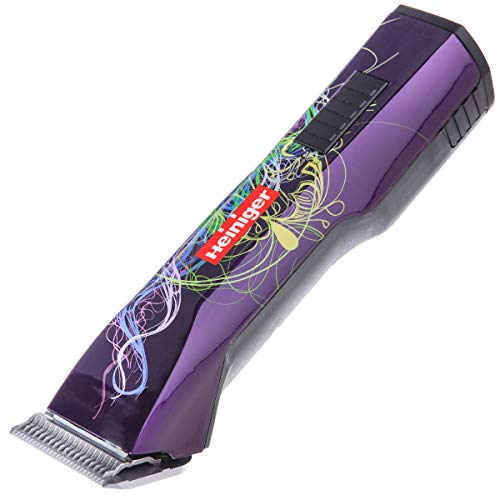Understanding Sheep Clippers: The Essential Guide to Types and Functions
The Diverse World of Sheep Clippers
When we think about sheep clippers, it is essential to recognise that they come in various types, each designed to cater to specific needs. For instance, handheld models are perfect for small farms or individuals who require a clipper for only a few sheep. On the other hand, heavy-duty clippers are suited for larger operations, capable of handling several sheep efficiently. Additionally, we also encounter corded and cordless models. Corded clippers offer consistent power, while cordless options provide the freedom to move around without being limited by cables, allowing for greater flexibility during use.
Functions Tailored to Your Needs
Sheep clippers serve multiple purposes beyond simply shearing wool. They can also be used for maintaining hygiene by trimming excess wool around sensitive areas of the sheep. This is particularly important for breeds prone to wool rot or flystrike. Some clippers even have specialized blades that can be interchangeable, making it easier to cater to different tasks such as standard shearing, detail work, or even trimming for show purposes. Understanding these functions will help us choose the right type for our specific requirements.
Key Features to Look For: What Makes a Great Sheep Clipper
Motor Power Matters
The power of the motor is a fundamental aspect to consider when selecting a sheep clipper. A stronger motor not only reduces the risk of the clipper overheating but also allows for quicker and more efficient cutting, making it particularly beneficial during the busy shearing season. We should be looking for clippers that boast robust motors, which will keep the clipper running smoothly even under heavy workloads.
Blades and Ease of Maintenance
Another crucial feature is the quality and type of blades. We want clippers equipped with sharp, high-quality blades that are easy to replace and maintain. Look for options that offer stainless steel blades as they tend to resist rust and maintain sharpness longer. Additionally, many models now feature self-sharpening blades, which significantly extend their life and reduce the need for frequent replacements.
Weight and Ergonomic Design
Weight is often an overlooked factor but can dramatically impact our experience when using sheep clippers. We prefer lightweight models that are easy to manoeuvre, especially during prolonged use. An ergonomic design with a comfortable grip will help prevent fatigue, allowing us to work efficiently without discomfort or strain.
How to Choose the Right Sheep Clipper for Your Needs
Assessing Our Sheep Size and Breed
Before making a purchase, we should consider the size and breed of the sheep we will be clipping. For larger breeds, a powerful clipper with heavy-duty capabilities is essential, whereas smaller breeds may be well-served with lighter, easier-to-handle models. Assessing the specific needs of our flock will guide us toward the most suitable option.
Frequency of Use
Another factor to gauge is how often we plan to use the clippers. If we shear regularly, investing in a more durable, professional-grade clipper may prove beneficial in the long run. Conversely, occasional users opting for budget-friendly models may find sufficient performance without breaking the bank.
Consulting Reviews and Recommendations
Before finalising our decision, it is wise to consult reviews and recommendations. Hearing from fellow sheep owners about their experiences with particular brands and models can provide insight into durability, performance, and overall satisfaction. We should also pay attention to any recurring themes in feedback to ensure we are making an informed choice.
Proper Maintenance Tips: Keeping Your Sheep Clipper in Top Condition
Cleaning and Lubrication
Proper maintenance is key to prolonging the life of our sheep clippers. After each use, we should clean the blades of any wool or debris to ensure optimal performance during our next clipping session. Regular lubrication of the blades with clipper oil is equally important as it prevents overheating and reduces friction, allowing the clipper to function smoothly.
Storing Safely
When not in use, it is crucial to store the clippers safely, away from damp areas that could cause rust. Maintaining a dedicated storage space protects the clippers from potential damage and ensures they remain in excellent condition for the next use. Additionally, keeping all accessories, such as replacement blades, in one place can simplify our maintenance routine.
Budgeting for Your Sheep Clipper Purchase: Value for Money and Options
Finding the Right Price Range
Setting a budget for our sheep clipper purchase is fundamental, as prices can vary significantly based on features and quality. We can typically expect to find decent quality clippers starting at a modest price point, while professional-grade models may demand a higher investment. Establishing a budget will help narrow down choices while ensuring we are mindful of value for money.
Evaluating Additional Costs
While the initial purchase price is important, we should also consider any ongoing costs associated with our clipper. This includes replacement blades, oil for lubrication, and any necessary repairs. Evaluating these additional expenses upfront allows us to understand the total cost of ownership better and aids in making a well-rounded financial decision.
Exploring Second-Hand Options
For those on a tighter budget, exploring second-hand options can present excellent value. Many experienced sheep owners upgrade their equipment, leaving behind high-quality clippers in good condition at a fraction of the original price. Just ensure we inspect these used models thoroughly before purchase to guarantee they meet our needs.




















